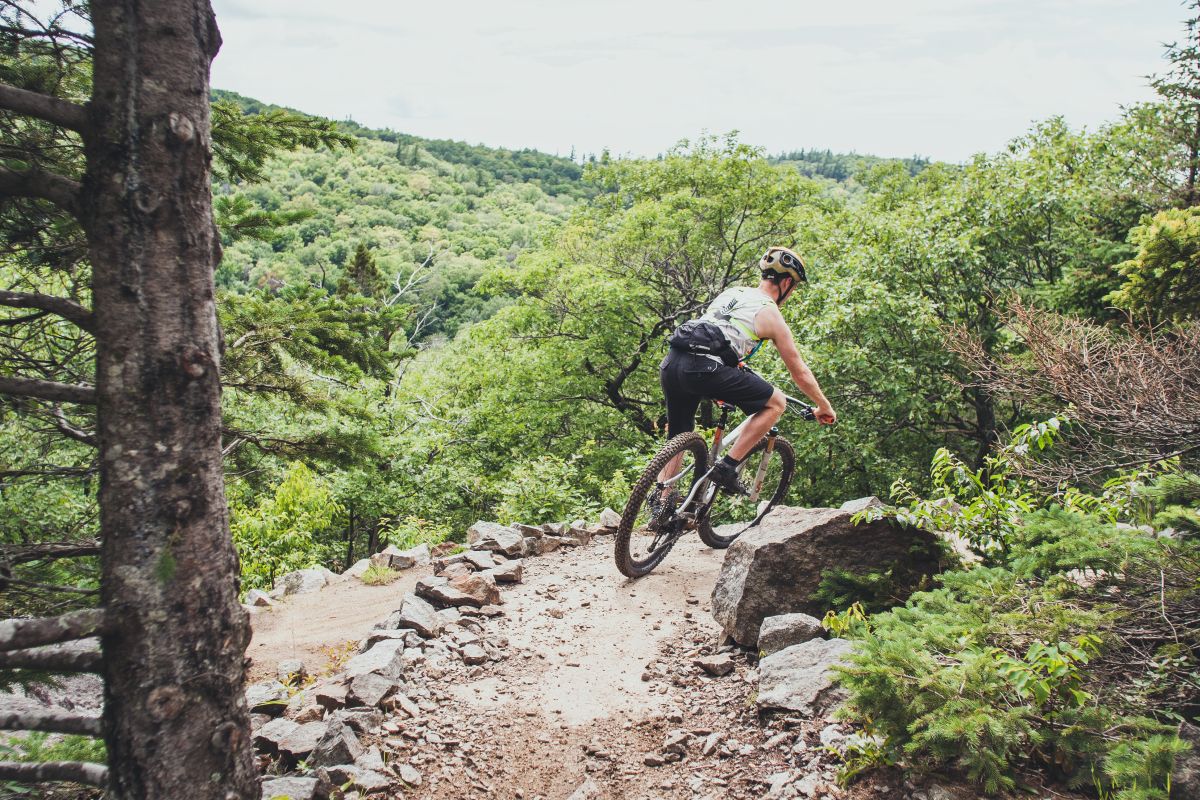Norco Optic Carbon 9.1 review
Balancing XC speed with trail-like descending abilities

I was 11 years old. The bike had a zebra-stripe paint job with purple anodized cantilever brakes. My Norco Bush Pilot was my most prized possession. It was the bike that got me into mountain biking and showed me how much fun can be had on two wheels. Twenty years later, the Optic arrived for a test. I hadn’t been atop a Norco since the days when I had to ride home as soon as the street lights came on.
Although my childhood Norco had a paint job that was much more rad than the Optic, I was almost as excited to ride the new machine as I was when I first swung a leg over the Bush Pilot. During the past few years, Norco has been putting out increasingly better offerings. I was stoked to see what all the buzz was about. The Optic Carbon 9.1 I tested came with a host of great components including a SrAM 11-speed drivetrain, Race Face bar, stem and Next SL carbon crank, SrAM Ultimate Guide brakes, a RockShox Reverb seatpost and a set of insanely light DT Swiss XMC 1200 carbon wheels. With the Fox 34 fork and Kashima shock, you have a bike that weighs much less than you might expect for such a capable machine.
With 110 mm of rear-wheel travel and 120 mm of fork travel, some might say this bike has an identity crisis. The amount of travel says “cross country bike,” but sits in the trail category of Norco’s mountain bike lineup. Surely a trail bike requires more travel than 110 mm, right? Well, if you look at the bike’s geometry, you can tell this is no XC race bike. Sporting a 68.5 degree head-tube angle and a 74.5 degree seattube angle (for a large), the Optic is set up nicely for both pedalling and descending much more than your average rock garden.
Norco Optic Carbon 9.1
Components SRAM XX1 rear derailleur, X1 shifter, Race Face Next SL 32-tooth crankset
Suspension Fox 34 Float Factory 29 Boost fork with 120-mm travel; Fox Float Factory DPS SV EVOL three-position shock
Wheels DT Swiss XMC 1200
Sizes S, M, L, XL
Price $7,500
With a 50-mm stem attached to the 760-mm bar, the Optic has great, responsive handling. Norco has done a good job tweaking the geometry so you can run a shorter stem and still feel centred in the bike. As a result, I always felt like I had good front- and rear-wheel traction that was predictable even in mud and on loose surfaces. That shorter stem also really helps when charging through rough sections. The Optic does an amazing job of soaking up bigger hits and recovering quickly without bottoming out or bouncing you off-line. It really acts like a bike with more travel when you ride through rock gardens or tricky root-filled sections.
The Optic’s geometry gives you a great descending position once you drop the Reverb seatpost out of the way. The bike somehow doesn’t sacrifice its climbing abilities as many other trail bikes do. Often bikes in the trail category have slackened geometry to increase their descending capabilities greatly, but do so in a way that makes them much more difficult to pedal up steep sections of trail. Norco seems to have found the sweet spot and has managed to put out one of the more balanced bikes in this category. I’m sure the 29″ DT Swiss carbon wheels aided in the Optic’s climbing abilities, as I found myself popping the front wheel over obstacles, putting the power down and somehow clearing sections of trail where I would normally labour to ride over. The Optic has great balance between pedalling efficiency and traction on bigger hits that require a lot of suspension compression.
I put a lot of time in the saddle on the Optic. The bike from the Port Coquitlam, B.C.-based company followed me eastward to Camp Fortune, near Ottawa, and Mont-Sainte-Marie. Each time, I struggled to find anything to complain about. Norco has done a good job of creating a very balanced bike that has the abilities to tackle all sorts of terrain and trails. The Optic is one bike you’ll want to ride long after the street lights come on.

